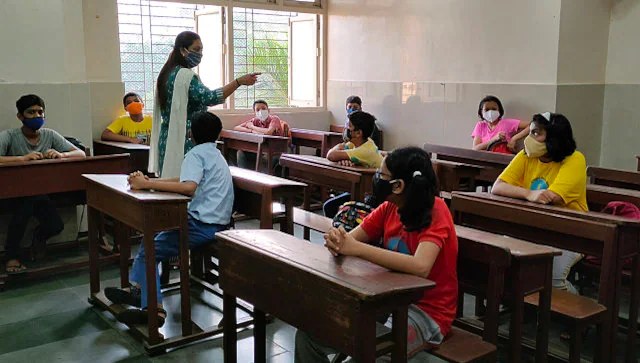
I guess I was asked to write this article because I’m a Westerner who has been defending India for a long time, and I have written many books, both in French and in English, which rewrite Indian history.
The first thing I would like to say is that when I was a child, I was brought up to be a proud Frenchman. We were taught, right from kindergarten, about the great French poets, writers, statesmen and warriors. Indeed, Napoleon, who could be called the Shivaji Maharaja or Maharana Pratap of France, has been given a huge space not only in French history books and curriculums, but also on national television, in newspapers, in hundreds of books, and so on.
I was born in the seventh district of Paris, near Napoleon’s museum in Les Invalides. It is not only a beautiful museum right in the middle of Paris, where Napoleon’s remains are resting, but also a place of national celebration, where great ceremonies happen in the presence of the French president and prime minister. Compare this with Shivaji Maharaj, who is only given a few lines in Indian history books — and sometimes even called “a plunderer”.
As Swami Vivekananda rightly said, “No nation can move forward unless it looks squarely at its own history.” However, what I have observed in India is that even now, after eight years of the BJP government, the education that is given to children is basically a British leftover. That is, you learn by heart tremendous amounts of Western knowledge, but you know nothing about Kalidasa, one of the greatest poets ever of humanity, or the Bhagavad Gita, which could be called the Bible of future mankind, or Sri Aurobindo, the supreme philosopher of the 20th and 21st century.
As a result, Indian kids grow up, most of them not being proud of being Indians, rootless, having no grounding in the greatness or the ancient-ness of their own history, their wonderful scriptures, the Vedas, for instance, which has inspired many Western philosophers, from Nietzsche to Voltaire. The greatest brain drain in the world is that of Indians, Hindus in particular, because having been brought up with a Westernised outlook, their only aspiration is to go to the US, UK, Canada, and so on.
Where, even though they do brilliantly (the head of Google is a Hindu, the new head of Twitter is another Hindu, etc), they melt into the Western fabric, having retained no Indian-ness, which could make them shine and partake in something of the greatness of the Indian ethos and spirituality. Their children and grandchildren will become more American than the Americans, more British than the British, as Macaulay, the Pope of Westernising India, had wanted.
Whenever I give lectures in the United States on the urgent and absolute need to rewrite Indian history — and mind you, there are tens of thousands of Indian students in American universities — it evokes very little interest in them.
It’s a paradox: In the US, out of 10 white Americans, seven practise Hatha Yoga, under one form or the other; most of the Hollywood stars are yogic adepts, you see often in films on TV series (like Kaley Cuoco, for example, in The Big Bang Theory) that they are able to practise Surya Namaskar or a difficult asana with ease and fluency. Indeed, Hatha Yoga and Pranayama are now taught in some US preschools and used in companies to de-stress their executives during three-day workshops.
How is it that in India, which gave the world Hatha Yoga, Pranayama, meditation or Ayurveda, these extraordinary tools of education are not only not utilised in schools and universities, but even frowned upon as something sectarian? Yet, all Hindus swear by Vasudhaiva Kutumbakam (the world is one family) and recognise that the Divine manifests Himself or Herself at different times of our history, using different names and scriptures. Isn’t that a universal non-sectarian spirituality that can be taught in India to Hindus, but also Muslims, Christians and Sikhs? As Sri Sri said about Pranayama, “Does the air that we breathe around us have a religion?”
The Parliamentary Committee on Education, under the leadership of Vinay Sahasrabuddhe, has been formed. My take, after four education ministers of the Narendra Modi government, is that nothing of core value has been touched, no Indian history has been rewritten, hardly any school curriculum has been changed.
Yes, it is not easy to do it: We remember 20 years ago, the huge outcry that happened on the part of minorities when Murli Manohar Joshi wanted to introduce the singing of “Vande Mataram” at the beginning of school sessions as they felt that it was a ‘Hindu’ imposition upon them. We can be sure that this committee, which also includes MPs of the DMK, TMC, Congress and communist parties, will come up with a watered-down and politically-correct version of the need to revise history textbooks and make India’s indigenous wisdom and knowledge a part of it.
But what is needed is a revolution! I know many people say, “Oh, let Narendra Modi first deal with the most pressing issues — economy, cleanliness, external relations, China, Kashmir, etc — and then address this matter.” But this is of the utmost importance. Unless you change the minds of your children and teach them to be proud and nationalistic, they will not contribute to the economic, social, or even sportive growth of India for the next few generations.
When I say revolutionary, I’m thinking for instance about the Aryan invasion theory, which has been proven wrong long ago but is still the foundation stone of every history book, Indian and Western, as well as all the school curriculums in India and abroad. I have shown in my recent book An Entirely New Indian History of India (garudabooks.com) that recent genetic studies have even proved that most Indians, whether they are from the South or the North, whether they are Brahmins or Dalits, men or women, have more or less the same genomes.
Yet, what does the Aryan invasion theory say?
That white people came from the West, and brought the caste system, Hindu mythology, the Vedas, etc, to the tribals and the darker Dravidians, whom they enslaved and slowly pushed back southwards. Every saint, from Swami Vivekananda to Sri Aurobindo to Sri Sri Ravi Shankar has rubbished this theory.
Yes, it still divides India: Dravidian parties use it to hound Brahmins, engineer violence when Hindi or Sanskrit is to be sought as the national language, and they still say that they are the “original people” of India. I have seen when I went to Maharashtra to do a feature on the Warlis; Christian missionaries convert them by saying: “You are not a Hindu, you are the original inhabitants of India, convert to the true God.”
The shortcoming in India’s history books isn’t just confined to the Aryan invasion theory. Our history textbooks mostly speak about the Mughals who reigned for only two hundred years, whereas the Cholas ruled for well over a thousand years, the Ahom kingdom for 700 years, the Vijayanagar empire for 400 years. We all know that Humayun was Babar’s son, and the father of Aurangzeb was Shahjahan, but how many Indians know the name of the father of Bal Gangadhar Tilak, the first true revolutionary of India with Sri Aurobindo, who advocated the eviction of the British — by force if necessary — long before Mahatma Gandhi?
It is not only the glamorous, courageous, daring, and extraordinary side of Indian history, embodied by the outstanding Shivaji Maharaja, who, with a handful of men, stood up against and defeated the most powerful army of the world then: Aurangzeb’s. But Indian students need to know the dark side of their history too. There is no greater holocaust in the world than that of the Hindus, not only at the hands of Muslim invaders but also due to the British or the Portuguese colonisers.
History reminds us that 500,000 Hindus taken as slaves died of cold on the Hindu Kush, or that Timur killed in one day 100,000 Hindus in Delhi — not a mean feat when there were no bullets to finish a man quickly — or the 10 million Indians who died in the 19th and 20th century of British-induced famines.
Overall, Indian history, if it is taught truthfully, and there are many documents to support this, is glorious, ancient and wise, and will make the youth of this country proud of being Indians and nationalistic like the Chinese are today with the result that China dominates the world, not only economically, politically, militarily, but also in sports.
The present Indian government needs to have the courage and the boldness to strike the iron while it is hot, which means now, while they are riding on a wave of popular support. We know that there will be tremendous resistance and backlash from so many quarters, but let us remember Maharana Pratap, who, like Shivaji Maharaja, fought against all odds, alone in the forest of Rajasthan against Akbar, and kept his spirit of independence alive. Let the memory of these great warriors inspire the current generation of Indians.
– By Francois Gautier
The author is a French journalist and author of ‘A History of India as It Happened’ (Garudabooks.com). He is also building a museum of true Indian history in Pune. Views expressed are personal.

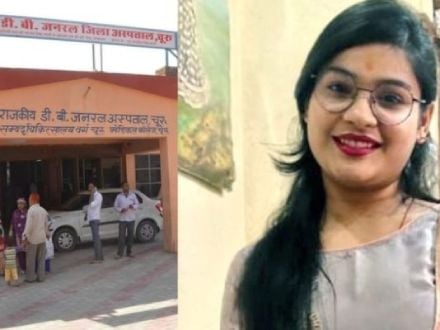 Rajasthan: Woman found hanging at a beauty parlour, Arshad, 3 others booked
Rajasthan: Woman found hanging at a beauty parlour, Arshad, 3 others booked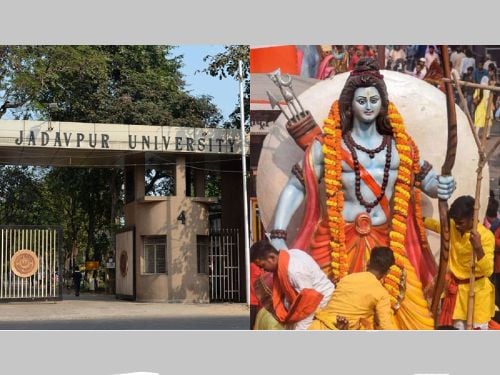 Jadavpur Univ revokes permission to celebrate Ram Navami on campus after granting it
Jadavpur Univ revokes permission to celebrate Ram Navami on campus after granting it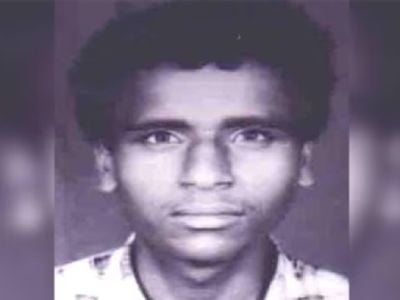 Chhattisgarh: Naxal top commander along with 28 other Naxals killed in a joint operation
Chhattisgarh: Naxal top commander along with 28 other Naxals killed in a joint operation Andhra Pradesh: Farooq kills mentally challenged Hindu man for insurance money
Andhra Pradesh: Farooq kills mentally challenged Hindu man for insurance money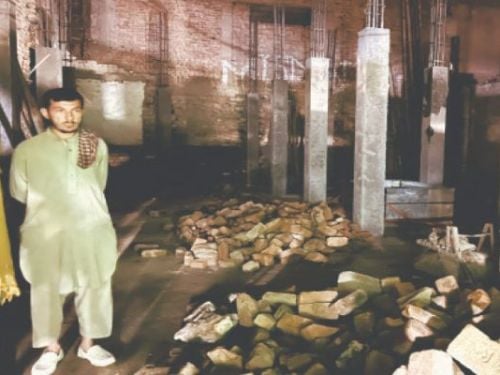 Pakistan: Ancient Hindu temple in Khyber Pakhtunkhwa demolished for commercial complex
Pakistan: Ancient Hindu temple in Khyber Pakhtunkhwa demolished for commercial complex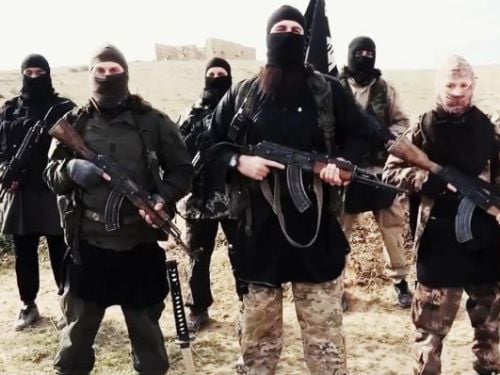 2 ISIS terrorists arrested in Germany for sexual abuse of minor Yazidi children
2 ISIS terrorists arrested in Germany for sexual abuse of minor Yazidi children